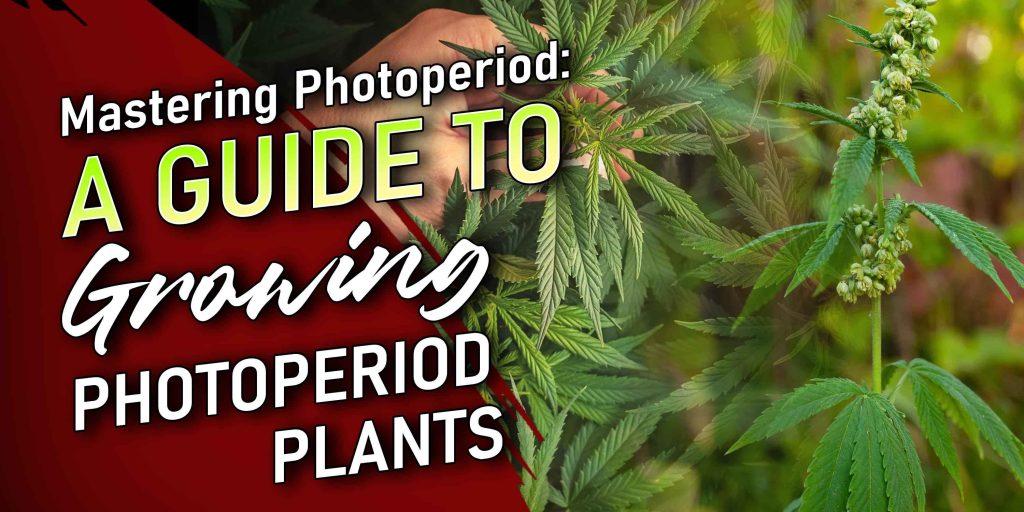

Mastering the art of manipulating photoperiod becomes paramount for growers aiming to optimize their cannabis cultivation outcomes. In this comprehensive guide, we will explore the nuances of cultivating photoperiod plants, elucidating the critical considerations from the initial seeding stage to the final harvest, thereby empowering growers with essential insights for achieving abundant yields.
Understanding how to grow photoperiod cannabis involves grasping the intricate relationship between light exposure and plant development. By carefully managing photoperiod, growers can effectively steer their plants through vegetative growth and flowering stages, maximizing the potential for robust growth and high-quality yields. Throughout this guide, we will unravel the techniques and strategies necessary for harnessing the power of photoperiod, providing growers with the knowledge and tools needed to cultivate thriving cannabis plants from start to finish.
Photoperiod cannabis, distinct from autoflowering strains that flower based on their age, relies on alterations in light cycles to induce its flowering phase. The transition from vegetative growth to flowering in photoperiod cannabis is contingent upon the specific balance of light and darkness it receives. This characteristic sets it apart from autoflowering varieties. Typically cultivated indoors, photoperiod plants provide growers with the flexibility to adjust and regulate lighting conditions meticulously, thereby ensuring optimal growth and development.
Photoperiod seeds contain the genetic blueprint for plants that respond to changes in light cycles. When selecting photoperiod seeds, it’s vital to choose reputable breeders known for stable genetics. These seeds offer growers the flexibility to control the vegetative and flowering stages, resulting in higher yields and potent buds.
From germination to harvest, photoperiod cannabis follows a specific timeline dictated by its light exposure. On average, photoperiod plants take anywhere from 8 to 14 weeks to mature, depending on the strain and growing conditions. During the vegetative stage, which lasts approximately 4 to 6 weeks, the plant focuses on leaf and stem growth, requiring longer light cycles of 18 to 24 hours of light per day.
Creating the ideal light cycle is paramount for cultivating healthy photoperiod cannabis. During the vegetative phase, providing ample light ensures vigorous growth and robust plants. Once ready to induce flowering, adjusting the light cycle to 12 hours of light and 12 hours of darkness signals the plant to shift its energy towards bud production. Consistency in light cycles is key to preventing stress and promoting optimal development.
Tracking the progress of photoperiod plants from seed to harvest requires keen observation and patience. Throughout the flowering stage, which typically lasts 6 to 8 weeks, buds develop and mature, showcasing their distinctive aromas and resinous trichomes. Regular monitoring of plant health, nutrient levels, and environmental factors ensures a successful harvest with potent and flavorful buds.
Knowing when to harvest photoperiod cannabis is essential for preserving its potency and flavor profile. As the flowering stage nears completion, trichomes transition from clear to cloudy or amber, indicating peak cannabinoid production. Harvesting at the optimal time ensures potent buds with desirable effects. Once harvested, proper drying and curing techniques enhance the quality and shelf life of the final product.
After harvesting your photoperiod plants, proper post-harvest care is essential to preserve their quality and potency. Trim excess foliage and carefully hang the buds in a well-ventilated, dark environment to facilitate the drying process. Once sufficiently dried, cure the buds in airtight containers, burping them periodically to release excess moisture and enhance flavor and aroma. Proper curing not only improves the overall smoking experience but also prolongs the shelf life of your harvest.
Mastering the art of growing photoperiod weed unlocks a realm of possibilities for growers. By understanding the role of photoperiod and implementing proper light cycles, growers can nurture healthy plants from seed to harvest. With patience, diligence, and a bit of botanical knowledge, cultivating photoperiod cannabis yields rewarding results in the form of potent, aromatic buds ready to be enjoyed responsibly. Whether embarking on a personal cultivation journey or seeking to expand horticultural expertise, harnessing the power of photoperiod plants offers endless opportunities for exploration and discovery in the world of cannabis cultivation.
1. What is photoperiod weed, and how does it differ from other types of cannabis?
Photoperiod weed, also known as photoperiod cannabis, relies on changes in light cycles to transition from vegetative growth to flowering. Unlike autoflowering varieties, which bloom based on age, photoperiod cannabis requires specific light durations to trigger its flowering stage. This characteristic distinguishes it from other types of cannabis.
2. How long do photoperiods take from seed to harvest?
The time it takes for photoperiod plants to reach harvest depends on various factors, including the strain, growing conditions, and desired maturity level. On average, photoperiod cannabis takes anywhere from 8 to 14 weeks to mature from seed to harvest.
3. What are photoperiod seeds, and why are they preferred by growers?
Photoperiod seeds contain genetics that respond to changes in light cycles, allowing growers to control the vegetative and flowering stages of the plant. Growers prefer photoperiod seeds for their flexibility and ability to produce higher yields compared to autoflowering varieties.
4. How can I monitor photoperiod seed to harvest time effectively?
Regular monitoring of plant health, growth progress, and environmental conditions is essential throughout the cultivation process. Keep track of the vegetative and flowering stages, noting any changes in plant development, such as leaf growth or bud formation.
5. What are the signs that photoperiod cannabis is ready for harvest?
As photoperiod cannabis nears harvest, monitor the trichomes on the buds for optimal maturity. Trichomes should transition from clear to cloudy or amber, indicating peak cannabinoid production. Harvesting at the right time ensures potent buds with desirable effects.
Within the cannabis realm, specific varieties have attained iconic status, ...
Bhang, deeply ingrained in Indian customs, stands as a time-honored ...
In recent years, there has been a surge in interest ...
Shopping with us is 100% secure! We don’t keep personal details.
Important Links
Subscribe and Get 10% Off
Connect With Us